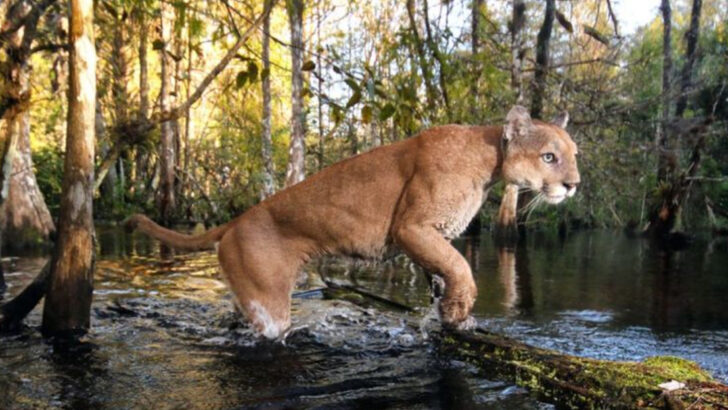Florida’s swamps aren’t just muddy backwaters—they’re pulsing with life, mystery, and more teeth than you’d expect. Step one boot too deep, and you might disturb something with jaws, fangs, or a venomous surprise. But it’s not all danger—some swamp dwellers are shy, bizarre, or even oddly beautiful. From giant reptiles hiding beneath duckweed to brightly colored snakes weaving through cypress roots, these wetlands are home to creatures straight out of a nature thriller. You’ll meet predators, tricksters, and a few harmless imposters that look way scarier than they are. Let’s wade in carefully—these are 13 of the most fascinating animals lurking in Florida’s swamps, and which ones you should never get too close to.
American Alligator
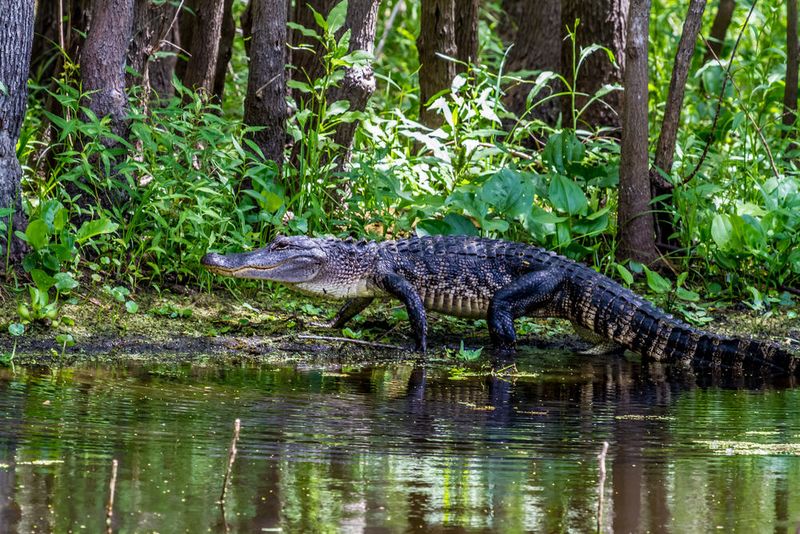
The American Alligator is perhaps the most iconic resident of Florida’s swamps. With their powerful jaws and stealthy movements, they are both fascinating and fearsome. These ancient reptiles can often be seen basking in the sun or gliding silently through the water. Despite their fearsome reputation, alligators are generally not aggressive to humans unless provoked. However, it is wise to keep a safe distance and never feed them, as they are wild animals and can be unpredictable. A fun fact: Alligators can live up to 50 years in the wild. Admire from afar!
Great Egret
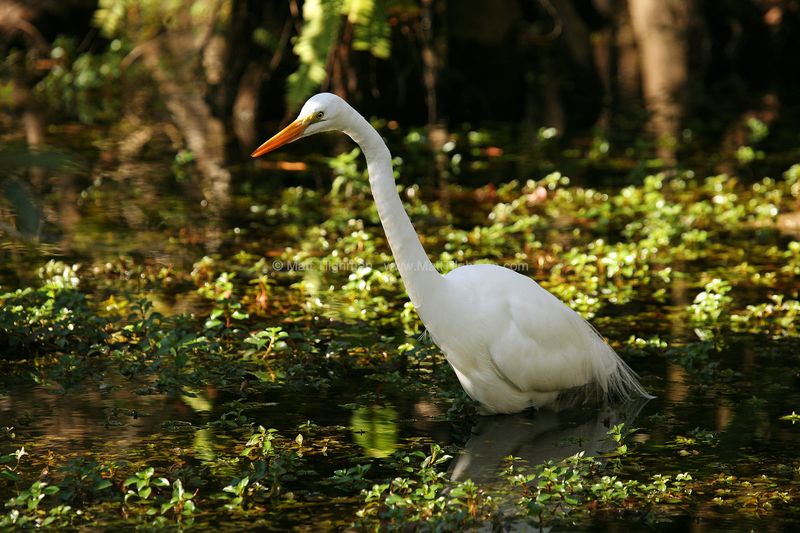
The Great Egret is a sight of pure elegance as it wades gracefully through the shallow waters of the swamp. With its slender neck and bright white plumage, it stands out against the lush green backdrop. Known for their patience, these birds can stand still for ages, waiting to snatch up an unsuspecting fish. They are a photographer’s delight, often seen posing against the swamp’s mysterious backdrop. While these birds are harmless, their beauty is best appreciated from a distance to avoid disturbing their natural habitat. Did you know? The Great Egret was once hunted for its feathers.
Florida Panther
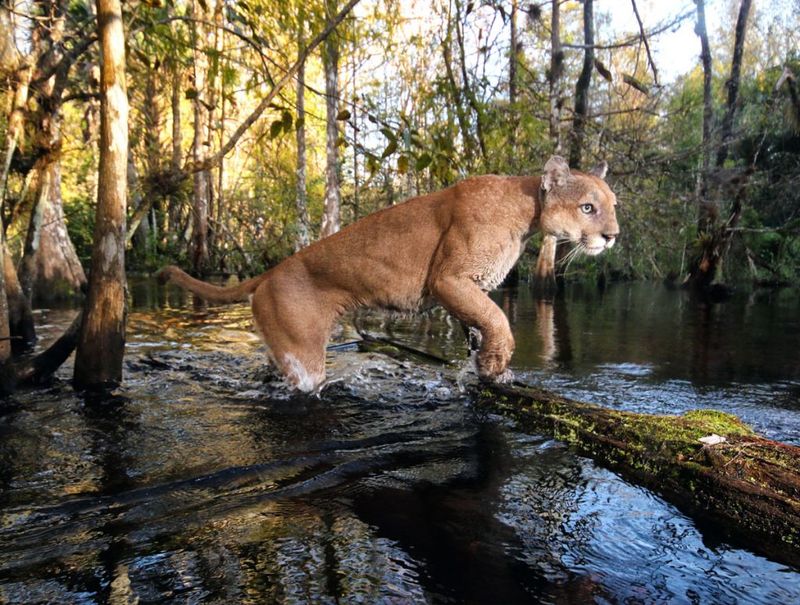
With a stealthy grace that belies its power, the Florida Panther is a rare sight in the swamps, yet its presence is felt. These solitary cats are critically endangered, with only an estimated 120 to 230 adults in the wild. Their tawny fur and piercing eyes blend seamlessly with the swamp’s shadows. Panthers are elusive and primarily active at dawn and dusk. While human encounters are rare, it’s crucial to respect their space. Despite their scarcity, conservation efforts continue to help these majestic creatures thrive in their natural habitat. A reminder: always admire from a safe distance.
Cottonmouth Snake
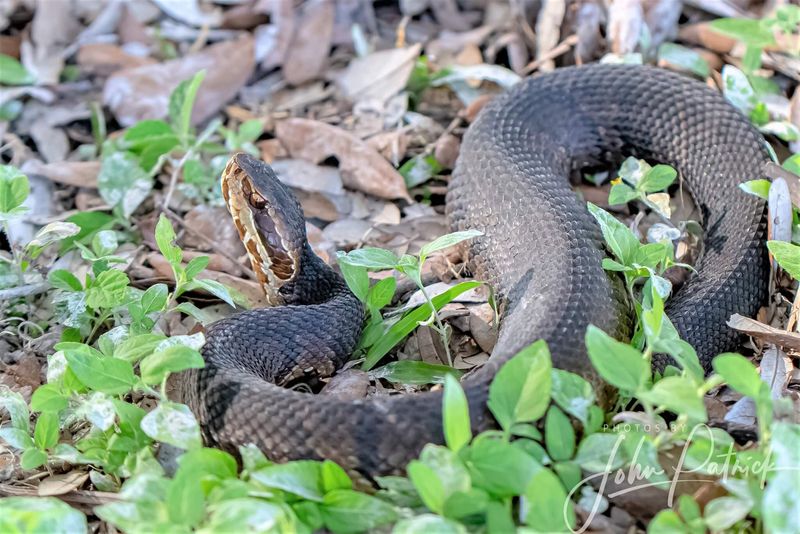
The Cottonmouth, also known as the water moccasin, is a venomous snake often encountered in Florida’s wetlands. Its menacing hiss and distinctive white mouth interior make it one to watch from a respectful distance. Often seen basking on logs or swimming in the water, the Cottonmouth is known for its defensive behavior. While bites are rare, they can be serious, so caution is advised when exploring their habitat. A unique trait of the Cottonmouth is its ability to float, making it an impressive swimmer. Approach with caution and respect their role in the ecosystem.
Roseate Spoonbill
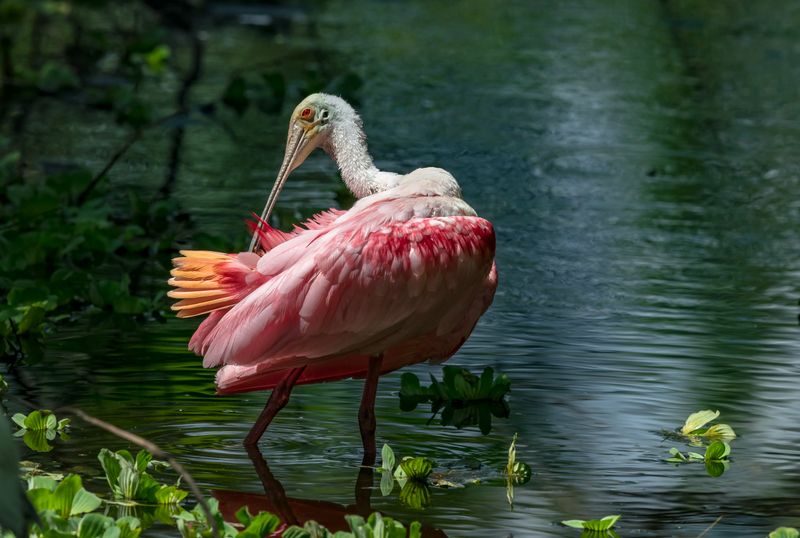
The Roseate Spoonbill, with its vibrant pink feathers and unique spoon-shaped bill, is a striking inhabitant of Florida’s swamps. This bird’s flamboyant appearance is a result of its diet, which includes crustaceans that impart pigment to its feathers. Watching a spoonbill feed is a spectacle, as it sweeps its bill side-to-side in the water to catch small fish and insects. These birds often gather in flocks, creating a colorful spectacle against the swamp’s lush green backdrop. While completely harmless, their striking presence is a reminder of the swamp’s rich biodiversity.
Swamp Rabbit
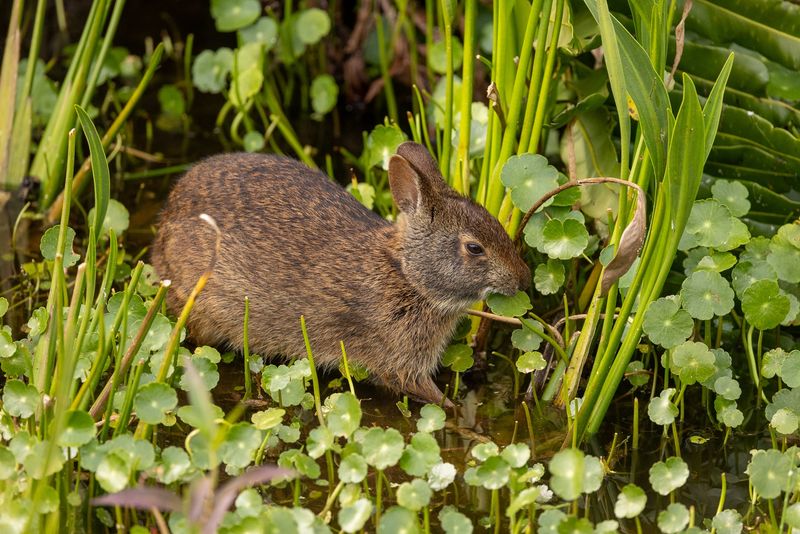
Swamp Rabbits are the unsung dwellers of Florida swamps, known for their adaptability to wet environments. These rabbits are larger than their cottontail cousins and are adept swimmers. Their brown fur provides excellent camouflage among the muddy waters and dense vegetation. Often, they can be spotted near the water’s edge, nibbling on plants or hopping through the underbrush. While generally shy and elusive, Swamp Rabbits play a crucial role in the ecosystem as both prey and seed dispersers. They are harmless yet important residents that contribute to the swamp’s ecological balance.
Barred Owl
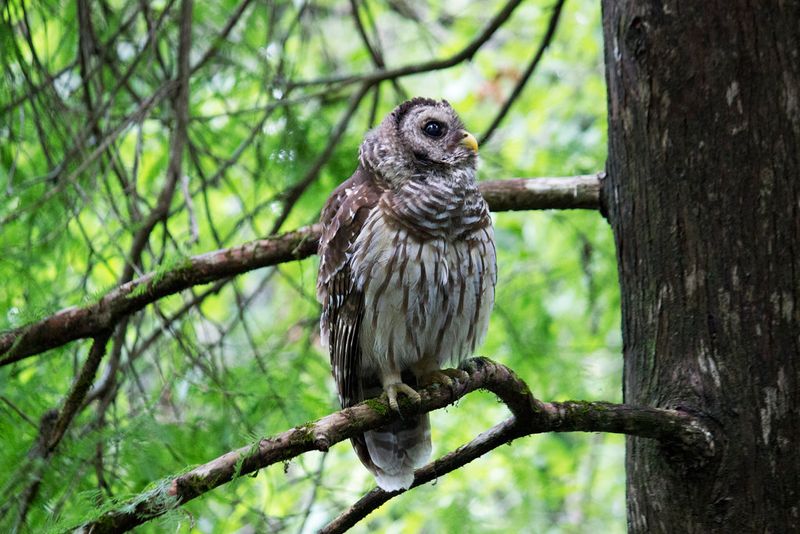
The haunting call of the Barred Owl is a familiar sound in Florida’s swamps. Known for their distinctive ‘who cooks for you’ hoot, these owls are nocturnal hunters, preying on small mammals and amphibians. With their mottled brown and white feathers, Barred Owls blend seamlessly into the swamp’s canopy. Observing one in the wild is a rare treat, as these owls are masters of camouflage and move silently through the trees. Their presence adds a mystical element to the swamp’s nighttime ambiance. For avid birdwatchers, the Barred Owl is a must-see species.
Yellow-bellied Slider
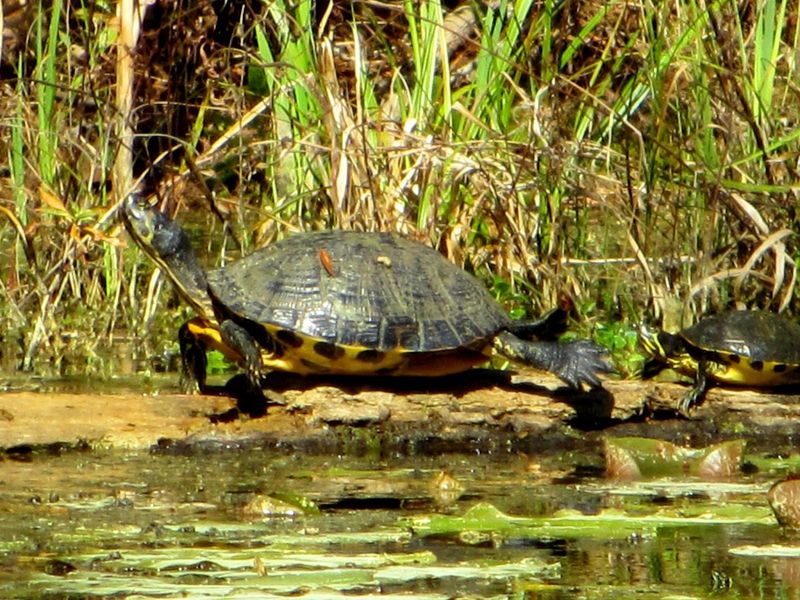
The Yellow-bellied Slider is a common turtle in Florida’s swampy areas, often seen basking on logs or swimming gracefully in the water. With its distinctive yellow markings and charming disposition, this turtle is a delight to observe. These turtles are not only cute but play an important role in the ecosystem by controlling insect and algae populations. They are harmless to humans and add to the vibrant tapestry of life found in the swamps. Watching a slider dive into the water is a simple pleasure that highlights the diversity of swamp wildlife.
Anhinga
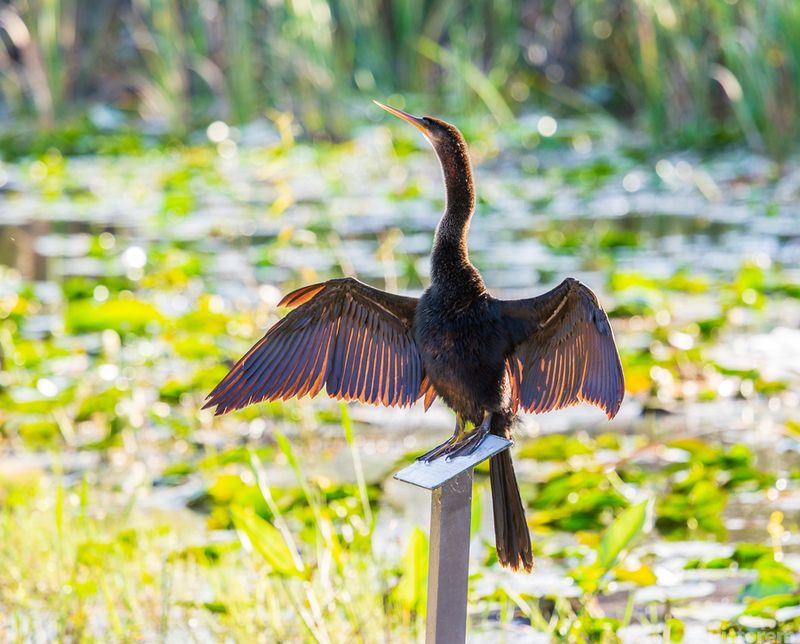
The Anhinga, also known as the snakebird, is a fascinating sight in Florida’s swamps. Its slender neck and sharp beak give it the appearance of a snake as it swims, with only its head above water. After hunting underwater, Anhingas frequently perch with their wings spread wide to dry, presenting a striking silhouette. Unlike most waterbirds, Anhingas lack waterproof feathers, which aids in diving for fish. This unique adaptation makes them skilled hunters. Spotting an Anhinga drying its wings is a quintessential swamp experience, showcasing the diverse adaptations of swamp wildlife.
Snapping Turtle
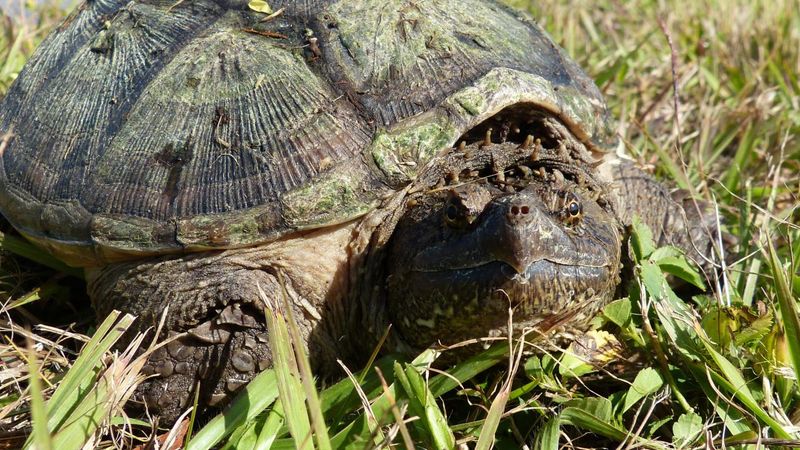
The Snapping Turtle is a formidable presence in Florida’s swamps, known for its powerful bite and rugged appearance. These turtles are true survivors, often seen submerged in muddy water with only their eyes and snout exposed. While they may appear menacing, Snapping Turtles are generally shy and prefer to retreat when approached. However, caution is advised if encountered on land, as they can be defensive. These turtles play a vital role in their habitat by scavenging and controlling populations of aquatic creatures. Admire their resilience, but maintain a respectful distance.
Prothonotary Warbler
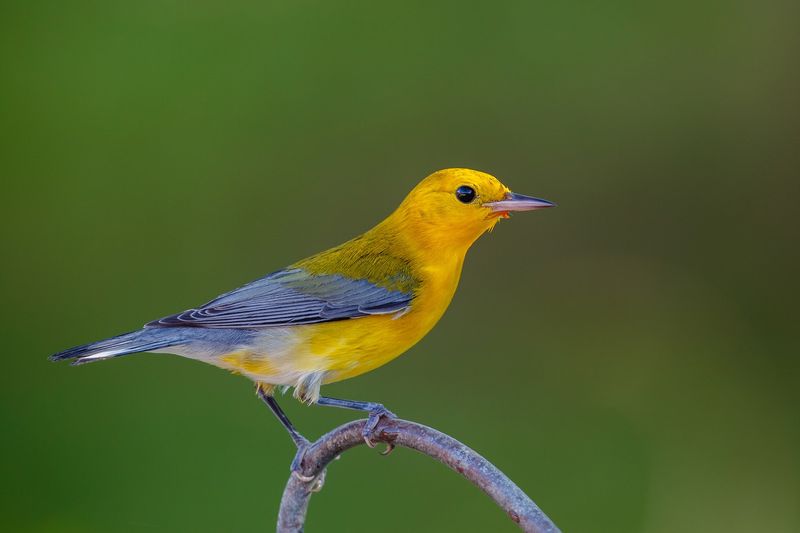
The Prothonotary Warbler is a burst of sunshine in the swamp, with its bright yellow plumage lighting up the dark, wooded areas. These small songbirds are often found flitting among the trees near water, searching for insects. Their cheerful song adds a melodious touch to the swamp’s symphony of sounds. Despite their small size, these warblers undertake long migrations, traveling between North and South America. Spotting a Prothonotary Warbler is a delight for bird enthusiasts, offering a glimpse of the vibrant life that thrives even in the swamp’s murkiest corners.
Florida Red-bellied Cooter
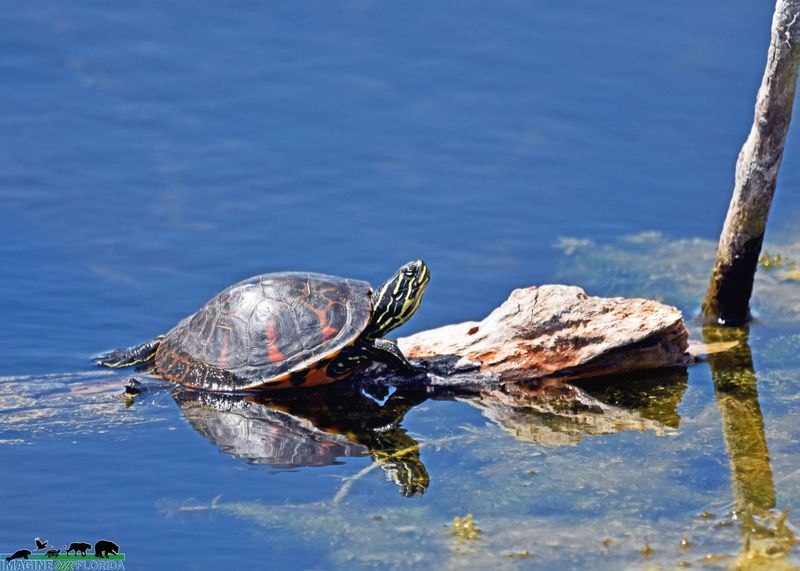
The Florida Red-bellied Cooter is a charming turtle often seen basking in the sun on logs. Its vibrant red belly sets it apart from other turtles in the swamps. This gentle reptile is an herbivore, feeding primarily on aquatic plants.
Although generally harmless, their shy nature makes them a creature to appreciate from a distance. Their presence indicates a healthy ecosystem, and their calm demeanor adds to the tranquility of the swamp environment.
Fun fact: These turtles are known to share their basking spots with alligators, exhibiting a unique interspecies harmony in their natural habitat.
American Bittern
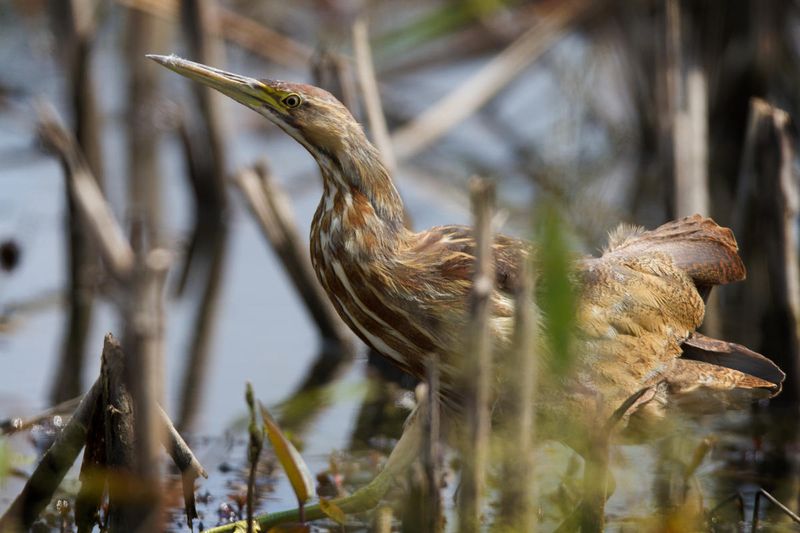
With its streaked brown plumage, the American Bittern is a master of disguise in the swamp. This bird’s call, resembling a distant water pump, adds an unusual sound to the wetlands.
Solitary by nature, the Bittern is often hard to spot, blending seamlessly with the reeds. Its patient hunting style, waiting motionless for prey, showcases its stealthy skills.
Despite its elusive nature, the American Bittern plays a crucial role in controlling swamp insect populations. Observing this bird requires a keen eye and patience, rewarding those who take the time to listen and watch.

